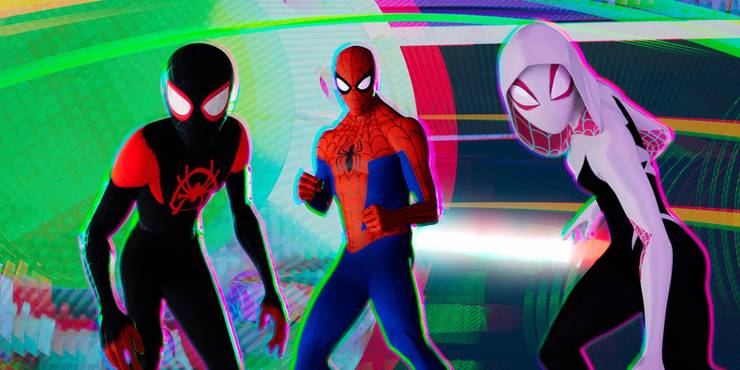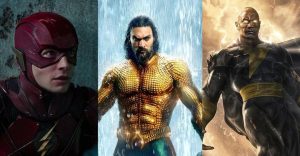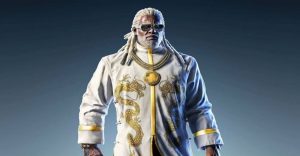Spider-Verse Handled The Multiverse Better Than No Way Home

Warning: SPOILERS lie ahead for Spider-Man: No Way Home!
Spider-Man: No Way Home‘s dive into the concept of the multiverse doesn’t hold a torch to that of Spider-Man: Into the Spider-Verse. The most recent installment of the Marvel Cinematic Universe centered on Tom Holland’s titular webslinger as he and Doctor Strange try to perform a spell to erase everyone’s memory of Peter Parker being Spider-Man, only for the doors to the multiverse to be burst open. This in turn invites a number of villains from other universes, including Alfred Molina’s Doctor Octopus, Willem Dafoe’s Green Goblin, Thomas Haden Church’s Sandman, Rhys Ifans’ Lizard and Jamie Foxx’s Electro. However, despite the star-studded line-up, No Way Home’s actual depiction of the multiverse concept falls far short of Into The Spider-Verse.
Spider-Man: Into the Spider-Verse marked the first animated theatrical film centered on the Marvel hero but shifts the focus to Miles Morales, a Brooklyn teenager who is bitten by a radioactive spider and begins exhibiting superhuman abilities. Miles is thrust into the job of being a superhero as the maniacal Kingpin begins experimenting with the potential of the multiverse and subsequently pulls in multiple other Spider-People into their universe, all of whom will help Miles learn what it means to be a hero and fight to put a stop to the crime lord. Spider-Man: Into the Spider-Verse scored rave reviews from critics and audiences alike and would bring home both the Oscar and Golden Globe for Best Animated Feature, the first non-Disney/Pixar film to do so since 2011’s Rango and the first when a House of Mouse title was in contention since 2006’s Happy Feet.
Outside of featuring Stan Lee and Steve Ditko’s iconic webslinger, both Spider-Man: No Way Home and Spider-Man: Into the Spider-Verse elected to explore the multiverse and bring multiple versions of the titular hero together. While the former is certainly a fun ode to Sony’s various franchises, as well as establishing itself as the best of Tom Holland’s solo movies, it still drops the ball when compared to its animated predecessor.
How Into The Spider-Verse’s Multiverse Works

With Spider-Man: Into the Spider-Verse, a new iteration of the Kingpin hit the screen with Liev Schreiber voicing the physically menacing villain as he has built a collider that accesses parallel universes. As the film progressed, it would later be revealed his motivations for doing so stemmed from Wilson Fisk trying to bring back his wife and son, who died after attempting to flee from a fight between Spider-Man and Kingpin. The crime lord teamed with scientist, Dr. Olivia “Liv” Octavius, to build the machine, though his desperation to reunite his family sees him ignoring her warnings of the dangers of the collider.
The exact nature of how the various other Spider-Men come to exist in one universe stems from a fight at the start of the movie between the prime universe’s Peter Parker and Green Goblin, in which the latter held the hero down within the collider beam. This would not only cause it to explode and kill Goblin, but also served as the catalyst for other Spider-People to come into the main universe, though each would arrive at different points in time, namely Gwen Stacy’s Spider-Gwen being sent a week prior to the story’s start. Each new Spider-Person would subsequently get their own comic book-style origin story introductions, ranging from the anime-inspired Peni Parker/SP//dr to the cartoonishly goofy Spider-Ham.
Taking a more sci-fi approach to breaking open the multiverse kept the rules of Spider-Man: Into the Spider-Verse‘s reality breaks relatively simple. When any story looks to explore high genre concepts such as parallel universes or time travel, there is certainly a concern of establishing rules so convoluted an audience can’t grasp them or that they end up collapsing in on themselves with various contradictions or plot holes. By putting the prime universe’s Spider-Man together with the collider beam serving as the sole two elements for the others’ arrivals, it expertly avoids the foibles many similar concept fare encounters.
No Way Home’s Multiverse Was Good, But Problematic

Following two acclaimed solo efforts and a nearly collapsed deal killing the character’s MCU future, Sony and Marvel came together for Spider-Man: No Way Home to bridge the decade-long universe with the former’s previous webslinging franchises. The threequel was hotly anticipated as rumors and theories abounded towards how the worlds would collide and who would show up: namely, whether Tobey Maguire and Andrew Garfield would return to one of their most iconic roles. The film swung to theaters in December 2021 to acclaim for the returns of all but two previous villains and said former Spider-Man actors, but while the film is certainly a treat for fans of the character, it’s also one filled with a number of problems in regards to its multiverse.
In the lead up to the film’s release, many questions abounded as to the exact nature of Doctor Strange’s spell that led to the various former villains arriving into the MCU with the trailers for Spider-Man: No Way Home offering no definitive answer, seemingly pointing towards it bringing in anyone who died fighting their Spider-Man. As seen in the film itself, the explanation instead is that Strange’s spell is linked to all who know of Peter Parker’s secret identity as Spider-Man. This, however, still proved to be something of an issue in keeping a consistent logic with the story.
If the death theory had been true, it would’ve gone against the endings of Spider-Man 3 and The Amazing Spider-Man in which both Sandman and Lizard survive their battles with the webslinger, with the former even becoming something of a sympathetic antagonist and helping Maguire’s Parker. However, the identity explanation proves just as contradictory in regards specifically to Jamie Foxx’s Electro, who never had a clear way to know of Parker’s double life but also makes a joke near the end of Spider-Man: No Way Home in regards to thinking Garfield’s Spider-Man to be Black, clearly indicating his not knowing the truth. While the identity spell does fit towards the other villains in the film and Maguire and Garfield — one would hope Spider-Man would know his own identity behind the mask — it’s one that has too many inconsistencies and plot holes for the film that makes it problematic.
Why Spider-Verse Handled Its Multiverse Better

In addition to a mere establishment of easier rules to maintain, Spider-Man: Into the Spider-Verse handled its multiverse better than Spider-Man: No Way Home in how it treated its audience. The biggest draw for the latest MCU chapter was the chance to see the various legacy villains coming back to fight Holland’s webslinger, but also the hopes to see Maguire and Garfield don their suits one more time to help in the fight. The problem with this is how reliant upon the past movies Spider-Man: No Way Home‘s existence is when compared to its animated predecessor. There are certainly plenty of nods for longtime fans of the films to enjoy in Spider-Man: Into the Spider-Verse, including a recreation of the upside-down kiss with Mary Jane, catching a car launched through a café window and the awkward dance sequence from Spider-Man 3. However, unlike the MCU title, the animated film wasn’t reliant upon audiences knowing what came before in order for its story to work. Utilizing its stylish comic book origin story sequences to introduce audiences to the various forms of Spider-People, even those unfamiliar with the Marvel comics will find themselves getting a grasp on the characters and villains introduced as much as the multiverse nature of the story.
Not only does the rules of Spider-Man: No Way Home‘s multiverse fall apart the more one analyzes them, but the story is too dependent on the viewer having seen both of Sony’s previous franchises. While it’s certainly possible that audiences who grew up with Maguire or Garfield’s films have shown them to their younger family members, the reality is many younger viewers today are only familiar with Holland and his MCU titles. This lack of familiarity would leave many feeling alienated when Molina’s Doc Ock and Dafoe’s Green Goblin emerge on screen as well as Maguire and Garfield, with those around at the time of their releases rising for standing ovations upon their arrivals while those who didn’t are scratching their heads at why such a reaction came about.
Much of the film’s humor is also a struggle for those with no knowledge of prior Spider-Man movies. Where jokes including Dafoe’s frequently memed “I’m something of a scientist myself” line and Electro’s wisecracks about falling into a vat of eels may incite chuckles in well-versed audiences, newcomers will subsequently find themselves lost. In comparison, Spider-Man: Into the Spider-Verse largely succeeded by not relying on its references to the past for laughs but rather crafting original humor with its well-rounded roster of characters. Spider-Man: No Way Home is a film audiences have been clamoring to see since the success of Spider-Man: Into the Spider-Verse, but while it mostly succeeded, it also served as proof rushing to capitalize on a recent hit doesn’t always work. The MCU’s story proved the most emotionally mature yet for Holland’s Peter Parker and created an interesting future path for him, but nearly crumbles under the weight of its multiverse ambitions. While Holland’s return is still somewhat in the air, audiences can look forward to more webslinging multiverse chaos with Spider-Man: Across the Spider-Verse (Part One) arriving on October 7, 2022.
- Doctor Strange in the Multiverse of Madness (2022)Release date: May 06, 2022
- Thor: Love and Thunder (2022)Release date: Jul 08, 2022
- Black Panther: Wakanda Forever/Black Panther 2 (2022)Release date: Nov 11, 2022
- The Marvels/Captain Marvel 2 (2023)Release date: Feb 17, 2023
- Spider-Man: Into the Spider-Verse 2 (2022)Release date: Oct 07, 2022
- Guardians of the Galaxy Vol. 3 (2023)Release date: May 05, 2023
- Ant-Man and the Wasp: Quantumania (2023)Release date: Jul 28, 2023
About The Author


















